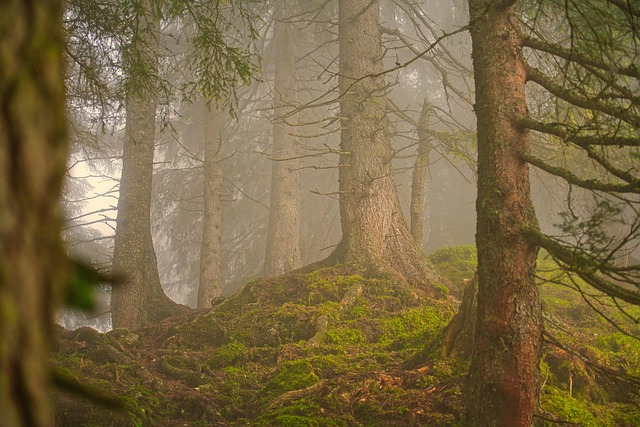When the calendar flips to January, many of us set intentions that feel both hopeful and overwhelming. The promise of a new year brings a natural invitation to reassess habits, health, and daily rhythms. Instead of choosing an abstract resolution that feels detached from the body, imagine turning your fresh start into a tangible, outdoor experience. A forest walk offers an exercise routine that is as grounding as it is invigorating, allowing you to walk into the new year with both mind and body in harmony.
Why a Forest Walk Beats the Typical Gym Routine
Most people equate exercise with the gym, treadmill, or studio. Yet, a forest walk turns the simple act of stepping into nature into a multi‑sensory workout. Research shows that walking on uneven terrain engages core muscles, improves balance, and increases heart rate more efficiently than flat pavement. In addition, the canopy overhead filters sunlight, providing a natural UVB dose that supports vitamin D production—critical for mood regulation and bone health.
- Improved cardiovascular fitness with lower perceived exertion
- Enhanced proprioception from navigating roots and rocks
- Reduced stress hormones thanks to natural green exposure
Connecting the Walk to New Year’s Resolutions
When you set a resolution to “be healthier” or “gain more energy,” a forest walk becomes a concrete vehicle to achieve that promise. Rather than vague goals, you commit to a daily or weekly stroll through trees, letting each step reinforce the behavior you want to embed. The act of walking can be measured: minutes per session, distance, or simply the number of times you step outside, turning a resolve into a habit.
“The forest is a mirror: you see the path you’re on, and you can decide to walk further or change direction.” – Unknown
Planning Your First Forest Walk
Choosing the right location is key. Look for local parks, nature preserves, or even the woods behind your office. The walk doesn’t have to be long; begin with a 20‑minute circuit and gradually increase. Mark milestones—such as a particular tree or rock—and use them as gentle reminders to keep pace or pause for reflection. Remember, consistency outweighs intensity when building a sustainable lifestyle change.
Safety Tips for the Trail
Even though the forest feels inviting, preparation can make a difference. Wear sturdy footwear with good grip, especially if the path is damp. Layer clothing to adapt to temperature shifts: a breathable base layer, a wind‑blocking jacket, and waterproof outerwear if rain is forecast. Keep a small first‑aid kit and a phone with emergency contacts. If you’re new to forest paths, consider joining a local walking group or bringing a friend.
- Check trail maps and weather reports before heading out.
- Let someone know your planned route and expected return time.
- Stay on marked paths to protect wildlife and preserve the ecosystem.
Integrating Mindfulness into the Walk
Walking is one of the few exercises that naturally encourages mindfulness. Focus on each breath, feel the ground beneath your feet, and listen to the rustle of leaves. Use the time to set intentions, acknowledge gratitude, or simply observe thoughts without attachment. By weaving mindfulness into the walk, you create a dual benefit: physical fitness and mental clarity, both essential for sustaining a new lifestyle.
Tracking Progress and Celebrating Wins
Keep a simple log: date, duration, distance, and a short note about how you felt. Over weeks, you’ll see tangible improvement—longer walks, faster pace, or simply a more relaxed mood. Celebrate milestones by treating yourself to a healthy snack or a new pair of walking shoes. Remember that progress is not always linear; setbacks happen, but the forest walk remains a steady, reliable ally.
Expanding the Experience Beyond the Path
Once the basic routine feels comfortable, you can add variety. Incorporate interval walking: briskly move for two minutes, then pace for one. Try a light resistance band for upper‑body engagement during the walk. Or, on cooler mornings, bring a yoga mat to practice grounding poses beside a clearing. Each variation keeps the exercise fresh, aligns with different aspects of your New Year goals—strength, flexibility, or endurance—and deepens the bond between you and the forest.
Building a Community Around the Walk
Shared experiences often stick. Invite a colleague or neighbor to join you. Group walks can provide accountability and social connection, both of which reinforce consistency. Consider volunteering for a trail maintenance event; the physical work will complement your walks, and the sense of purpose can amplify motivation for other resolutions like improving mental health or reducing carbon footprint.
Reflecting on the Journey
As months pass, take time to assess how the forest walk has reshaped your life. Ask yourself: Do I feel more energized? Have I reduced my stress levels? Is my body moving more freely? Write down your observations, and adjust your routine accordingly. This reflective practice ensures that the walk continues to serve your evolving lifestyle rather than becoming a rigid chore.
Looking Ahead: Turning the Habit into a Legacy
When the year ends, the forest walk can still be a part of your daily life. You might introduce new seasonal hikes, join a local hiking club, or simply keep walking in the neighborhood. The key is to keep the movement alive, letting it remain a tangible reminder of your commitment to being the best version of yourself. And because you built this habit around the fresh energy of a new year, you’ll find it easier to adapt to future resolutions, confident that you can walk into them—literally and figuratively—into brighter days.


